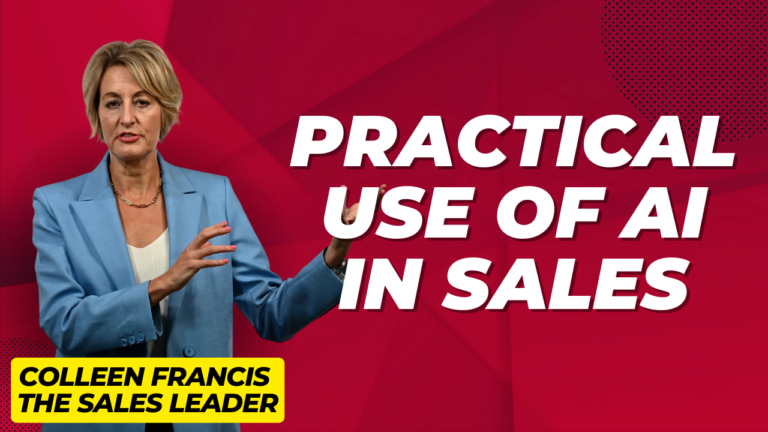As a sales leader, you’re fiercely vigilant about where you spend your time daily, so it’s tempting to be wary of social media. But don’t be so hasty!
For all of us in sales, it comes down to how we use social media in our work. Unchecked, it certainly could become a giant time sink that pulls us into a swamp of confirmation bias where we seek out and validate only opinions that match our own. But like any power tool, you must first know what specific problems it’s good at solving, and then use it skillfully to help execute your number-one task: to sell more to more customers in less time.
Social media in sales—whether it includes LinkedIn, Instagram, Facebook, TikTok or others—is a powerful and essential resource for connecting with other people about the things you care about mutually, for helping you be in service to others, and to help you learn more about all of the above.
Here are five way you must use this power tool skillfully…
1. Pick three media platforms
In my most recent book. Right on the Money, I talked about how important it is to have a diversity of social media platforms as part of your ongoing efforts to pursue market ubiquity. Don’t just settle on one platform: go where your customers are. Pick three. That’s why I call this your Tempo Triad. Which three? Ask your customer. Look where they engage the most. Let that be your guide.
2. Look at your product line
What you sell determines where you must go online. If you make something that your customer uses to make something else consumer driven (e.g., selling bottles to craft beer companies,) your Tempo Triad might include Instagram or Facebook because of the because of the visual nature of these products. If your product line is more traditional, your platform list might be more focused on include X and Linked in due to their high corporate participation. One of the biggest surprises for me (and definitely the most controversial) is the use of TikTok. I was surprised at the high level of participation form both name brand business and consumer brands on the platform and as a result, have found myself also needing to participate in content creation and publishing there.
3. Don’t be shy about connecting
The reason we network with others is to get the compounding effect to go to work for us. The more often we connect meaningfully, the more opportunities we create for people to tell others about the positive experiences they’ve had interacting with you. That’s why I talk often about Critical Mass Influence, which is the vector of people affecting your ability to complete business transactions. You never know when you will next hit a gold vein while prospecting, so you must consistently use social media to connect with as many people as possible.
4. Post useful material often
Notice that I’ve talked about the importance of connecting meaningfully with your audience. The quality of your network is determined by the quality of the material you populate it with. Frequency matters, too. At minimum, you must post to your three platforms three times a week. Or daily if you can. Purposeful material doesn’t mean you have to make it from scratch each time. Look at what you already have in-house. Your marketing department has a wealth of up-to-date insights and market trends that you can distil and share with your audience. Be useful: that’s the goal here.
5. Look at who (and what) your customer is paying attention to
It pays to notice details in your customer’s social media feed. Who do they talk to? And who talks to them? If they are influencers, reaching out to them might become a valued resource or even a referral source. It’s not stalking if you chime-in on a discussion thread your customer is having on social media. They are their because they want to be seen and heard, not because they want to be invisible! Be of service: you’re uniquely positioned to offer an informed, positive perspective on a number of subjects they care about. Let their posted material serve as a springboard for continued dialogue.
6. Treat it as both a broadcasting and listening tool
Social media is a great place to share good news, and to thank people for every new referral or testimonial provided. But social media isn’t just a place to talk about yourself. It’s woefully underused as a listening tool! Sometimes, customers aren’t overt in revealing a pain point they have. For example: I work with an old-school seller who sells oil products to manufacturers. One day, he was watching his customer’s newest video on LinkedIn (featuring a factory tour) and noticed a key piece of equipment in the background, which had a spotty performance record. He reached out to the CEO and asked if he’d also encountered issues with that product. Indeed they had. And a brand-new relationship was forged, resulting in hundreds of thousands of dollars in new business.
As you can see, there is tremendous value in social media…if you use it correctly and in service to your key goals as a sales performer. Make no mistake: sales is still very much a people business. It’s just that now there are millions more involved in that undertaking.
Are you making full use of social media in your own sales engagement strategy?




